Seaman First Class Lawrence J. Waszkiewicz
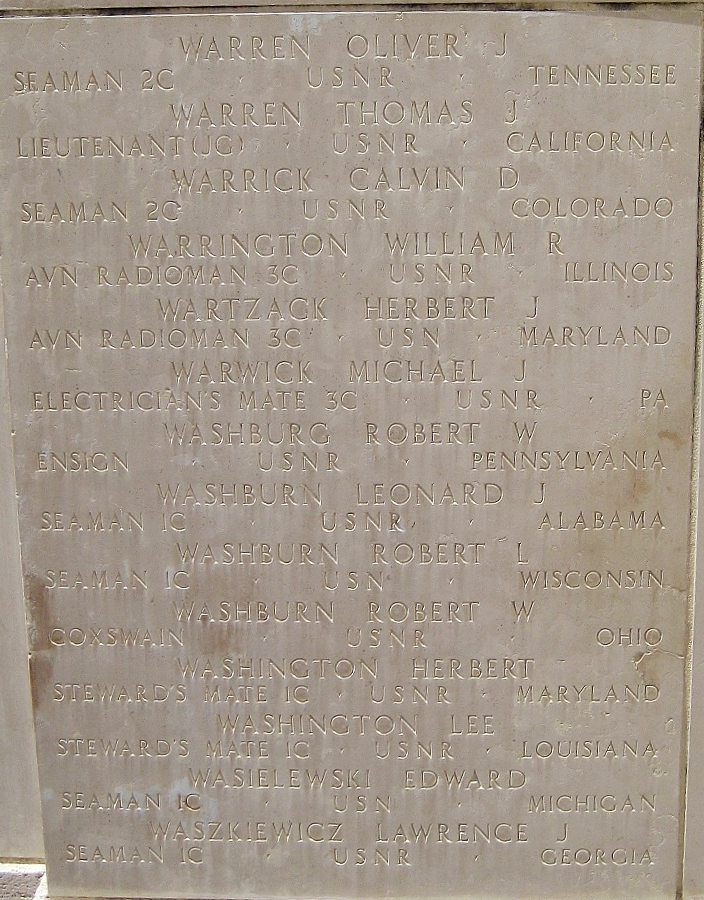
- Unit: USS Fanshaw Bay
- Service Number: 6365973
- Date of Birth: May 14, 1923
- Entered the Military: July 2, 1942
- Date of Death: June 17, 1944
- Hometown: Fort Screven, Georgia
- Place of Death: Pacific Ocean, off the coast of the Marianas Islands
- Award(s): Purple Heart
- Cemetery: Court Two, Courts of the Missing. National Memorial Cemetery of the Pacific, Honolulu, Hawai'i
Mentored by Mrs. Jennifer P. Coleman
Luella High School
2020-2021
Early Life
Born May 14, 1923, in Talladega, Alabama, Lawrence Waszkiewicz grew up as the eldest of three sons. His Russian-born father, Konstanty, immigrated to the United States on July 4, 1906. After serving as a U.S. soldier during World War I, Konstanty filed a naturalization petition on May 20, 1918.
He married Susan “Susie” Scott around 1920. She was 27, and he was 31 at the time of their marriage.
The Waszkiewicz sons, Lawrence, Oscar, and John, were born in Talladega, Alabama, where they lived in 1930.
By 1940, the family lived in or around Savannah, Georgia. The only census record for the family in 1940 lists Lawrence’s younger brother, John, as an inmate at St. Thomas Vocational School. In 1941, when he registered for the draft, Lawrence worked for the Quartermaster at Fort Screven, Georgia. In July 1942, he enlisted in the U.S. Naval Reserve. His brothers followed in his same footsteps. Oscar served in the U.S. Army and John in the U.S. Navy.
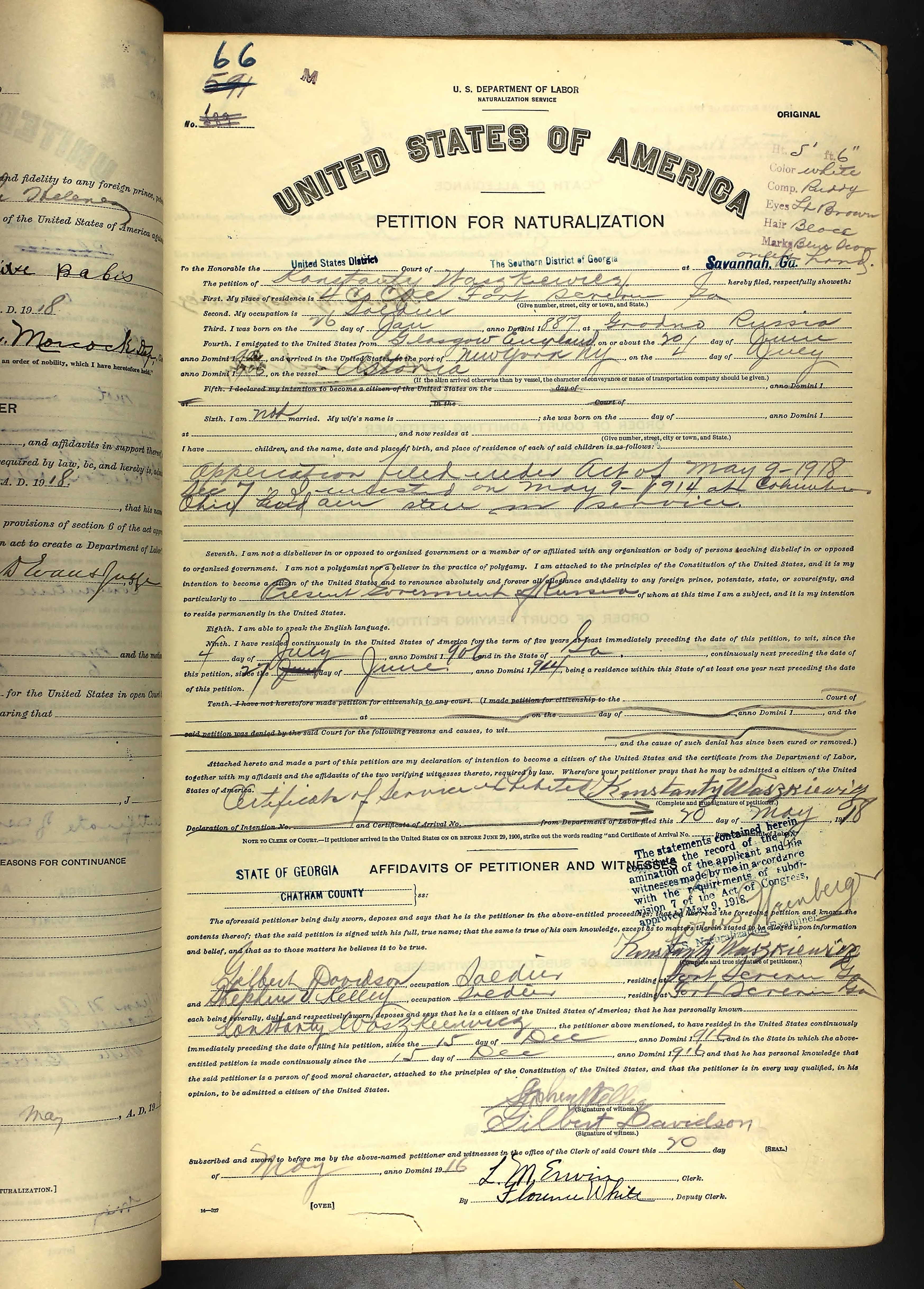
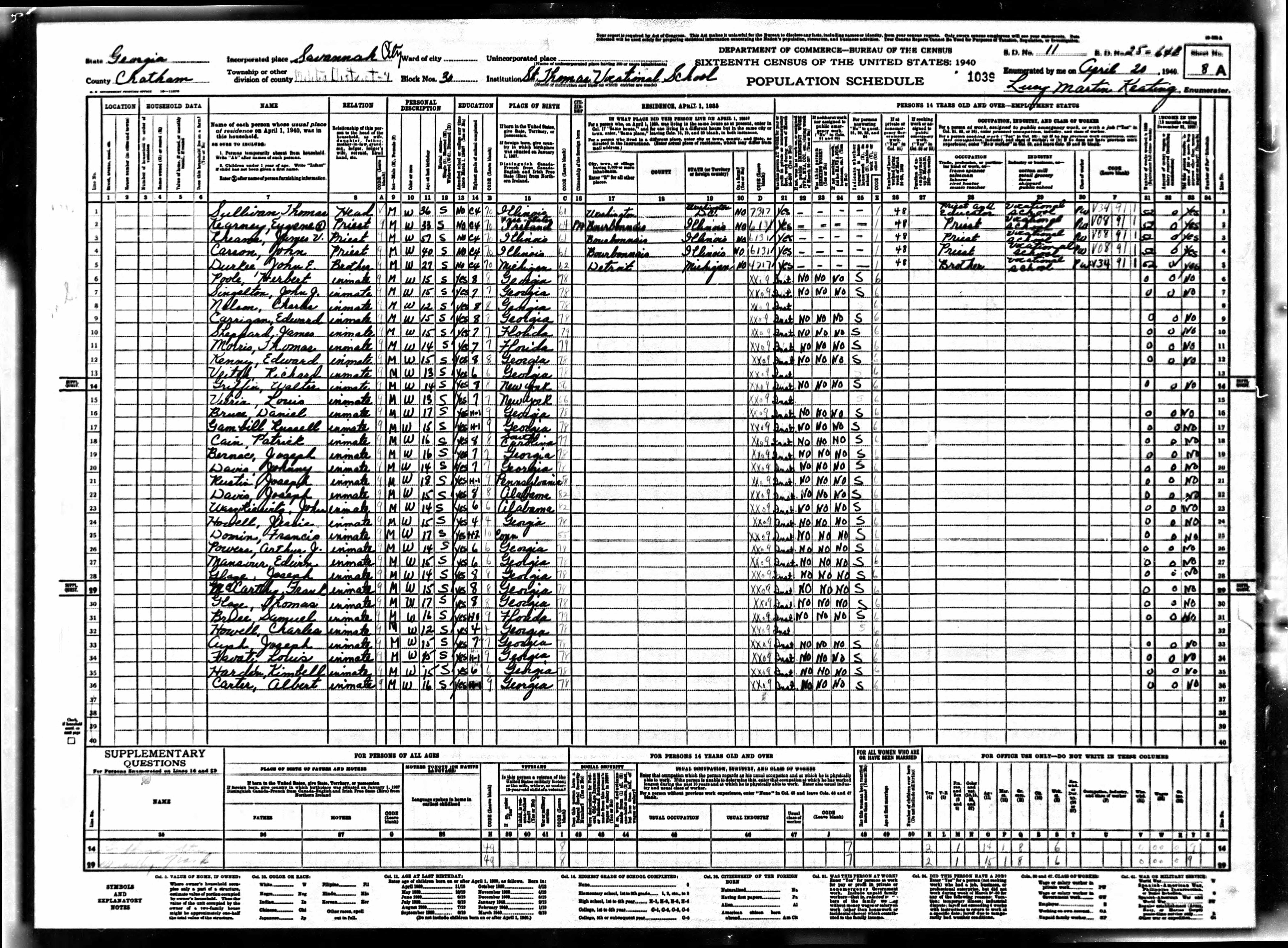
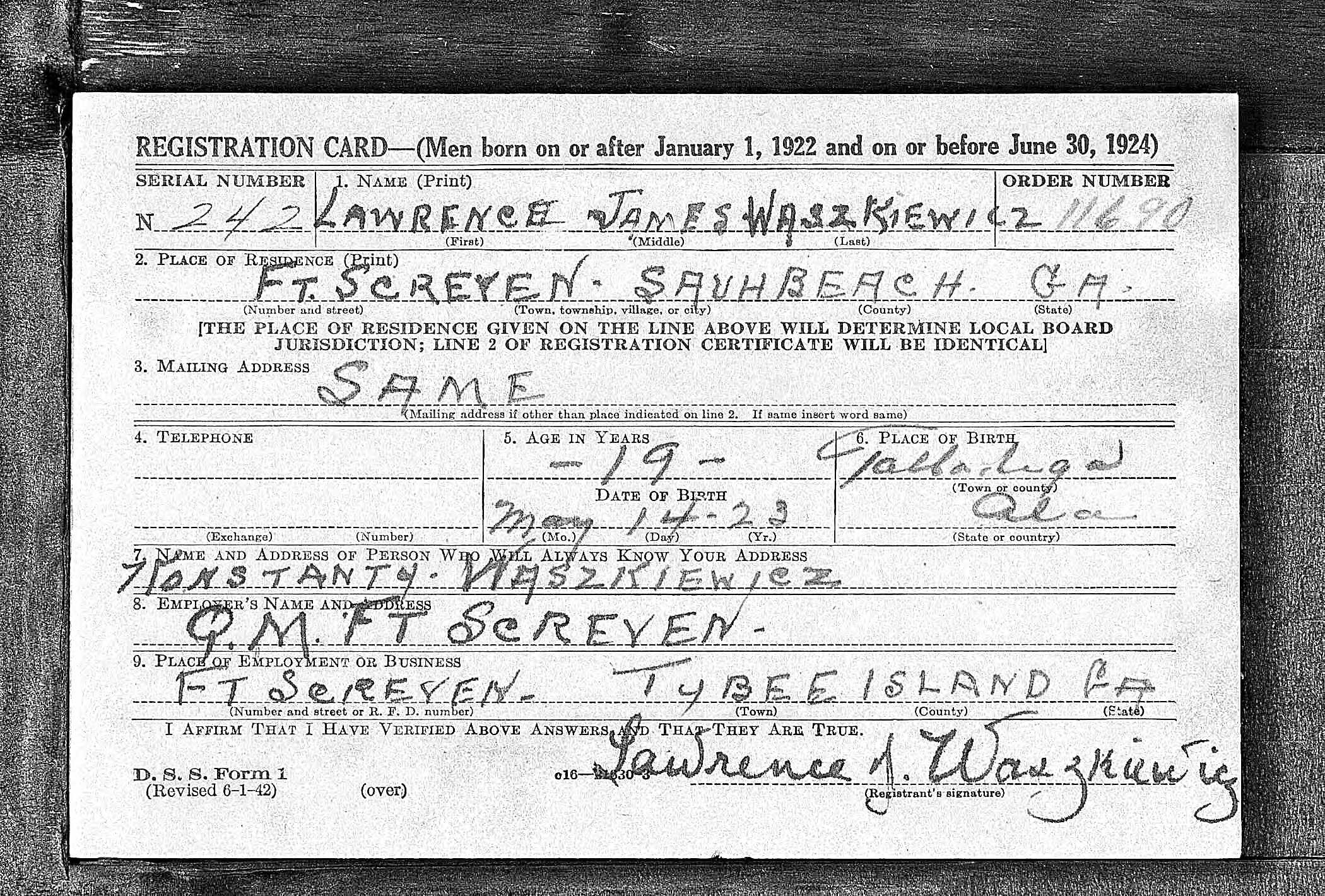
Homefront
Fort Screven, Georgia, has a history of military significance. The fort served as a coastal defense post from 1898 until the end of World War II in 1945. The fort housed coastal artillery served as an infantry post and a deep-sea diving school. During the Great Depression, Lieutenant Colonel George Catlett Marshall commanded Fort Screven. He later commanded the entire U.S. military during World War II. Following the war, Marshall authored the Marshall Plan, which rebuilt war-torn Europe after the war and earned him the Nobel Peace Prize in 1953.
During the World War II era, a diving school was established to train engineers for underwater salvage operations and repair bomb-damaged ports. The United States Army Engineer Diving and Salvage School became the only school of its type operated by the U.S. Army in the United States. At the end of World War II, the U.S. Army declared the fort surplus and sold it to the city of Savannah Beach (now Tybee Island) for $200,000. They, in turn, auctioned it off to the public.
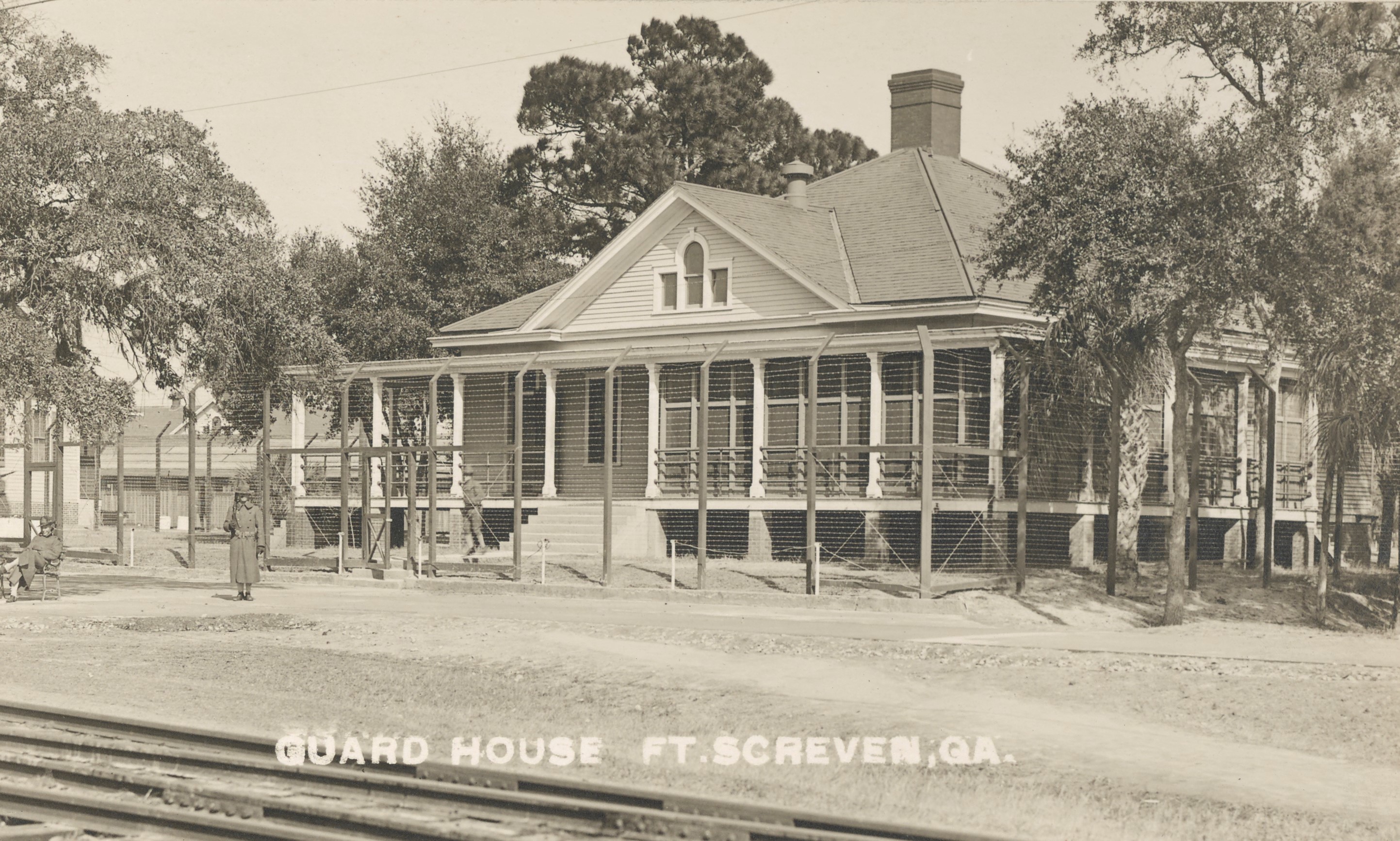
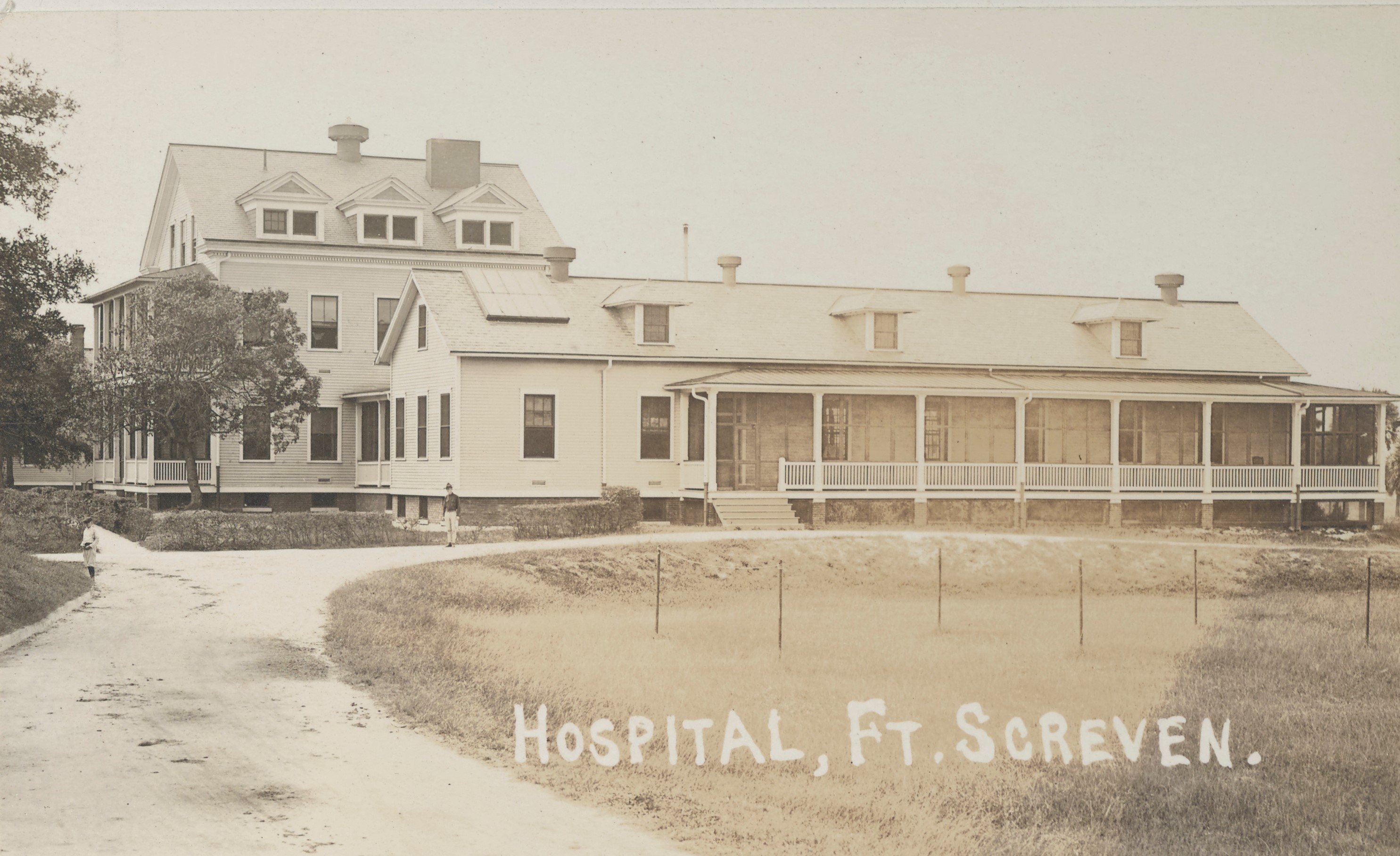
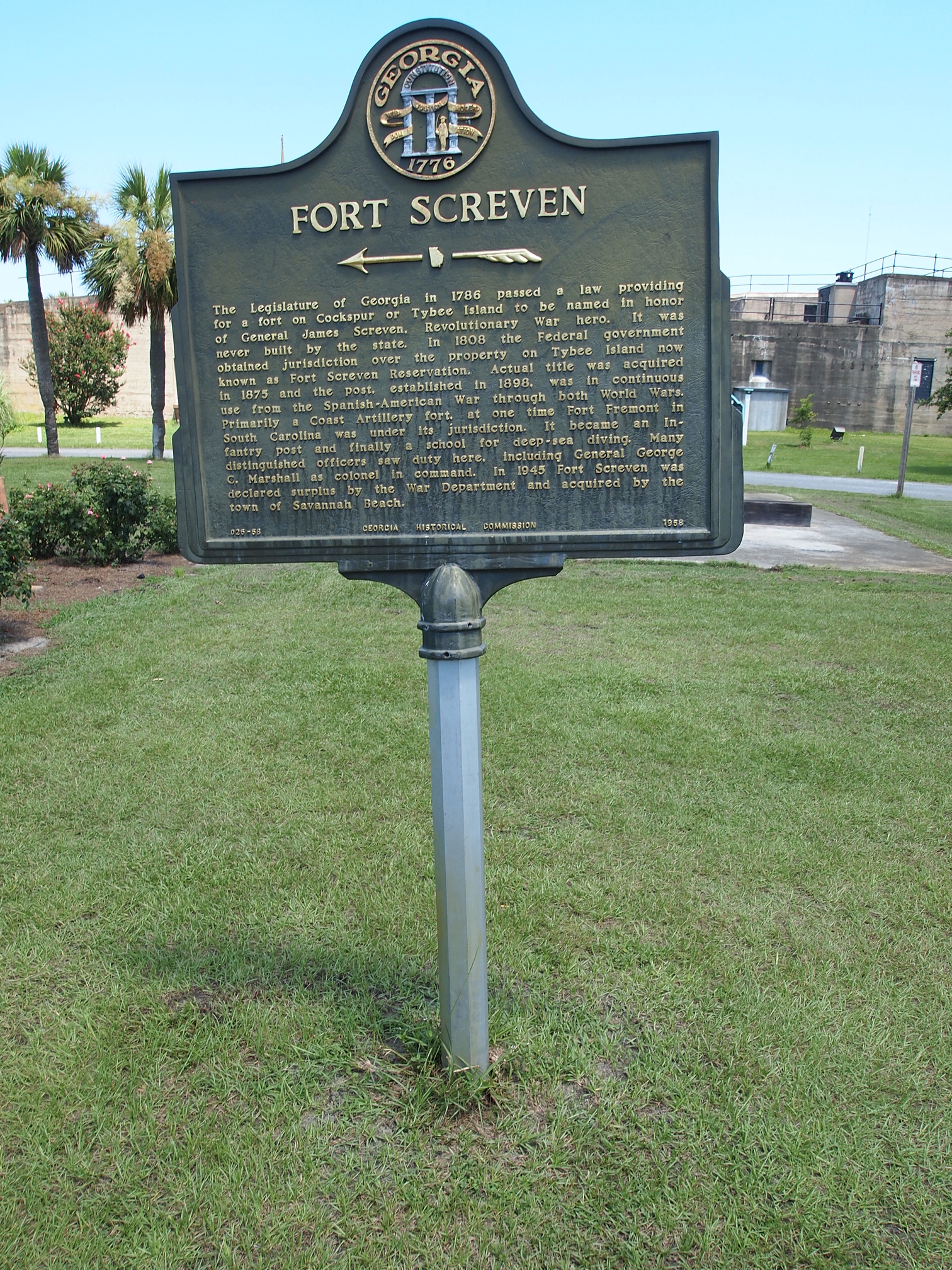
Military Experience
Waszkiewicz enlisted in the U.S. Naval Reserves on July 2, 1942, as an apprentice seaman. He trained at the Naval Training Station in Newport, Rhode Island. The Naval Training Station in Newport saw 204,115 recruits during World War II. Recruits trained here through 1952.
From Rhode Island, he was transferred to the Naval Training Station at Norfolk, Virginia, in August 1942 and later to the Pacific Fleet in San Francisco, California.
Service Aboard Ship
Waszkiewicz received orders to serve on the USS Republic in February 1943. The USS Republic served as a naval transport vessel. In December 1943, Waszkiewicz transferred to the USS Fanshaw Bay.
The USS Fanshaw Bay, commissioned initially as an aircraft escort vessel, became an escort aircraft carrier in 1943. According to military records, Waszkiewicz served with the rank of Seaman First Class.
Operation Forager
On May 29, 1944, the Fanshaw Bay assisted in Operation Forager’s staging in the Marshall Islands, staging troop landings in the Marianas Islands. These maneuvers became a part of the larger naval battle for control over the Philippine Sea. On the afternoon of June 17, 1944, a Japanese dive bomber attacked the USS Fanshaw Bay. Its bomb penetrated the ship’s aft elevator and resulted in multiple fires. Waszkiewicz died as a result of extreme injuries. On June 18, the surviving crew buried the dead, including Waszkiewicz, at sea.
Waszkiewicz received a posthumous Purple Heart. The USS Fanshaw Bay shared the Presidential Unit Citation award for its role in Operation Forager and returned to Pearl Harbor, Hawaiʻi, for repairs.
The Waszkiewicz Family
Konstanty and Susie Waszkiwicz both died in 1947. Both of Lawrence Waszkiewicz’s younger brothers continued their military service.
Oscar Waszkiewicz registered for the draft on June 20, 1942, and enlisted in the U.S. Army Air Forces on December 10, 1942. He served as a technical sergeant in World War II. He was discharged following the war but reenlisted in 1946 with the Medical Administration Corps, serving in the Korean War. He served until his honorable discharge on October 31, 1963. On January 5, 1987, he died and was buried in Riverside National Cemetery in California.
John, the youngest brother, registered for the draft on July 12, 1943. He entered the U.S. Army on October 2, 1943. He served until he was discharged on April 4, 1946. He reenlisted two years later, on January 12, 1948, and served until February 1, 1952. He held the rank of sergeant. On October 31, 2001, John died and was buried at Irving Park Cemetery in Chicago, Illinois.
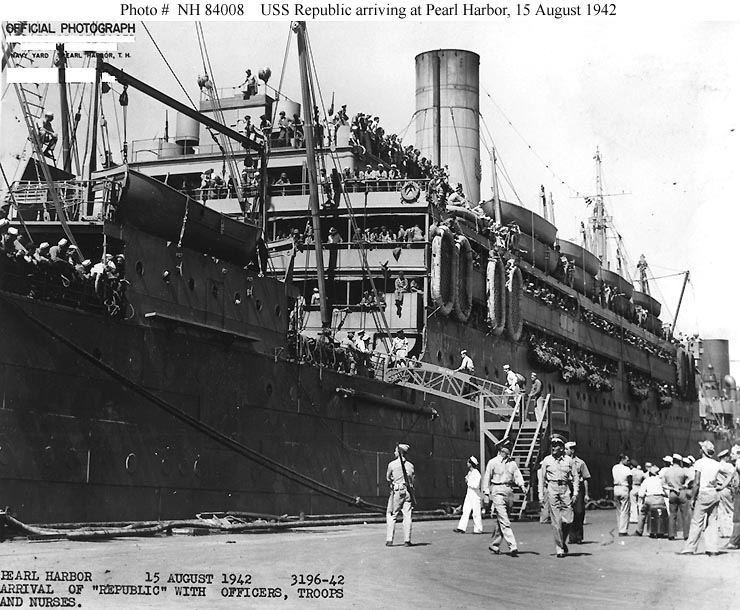
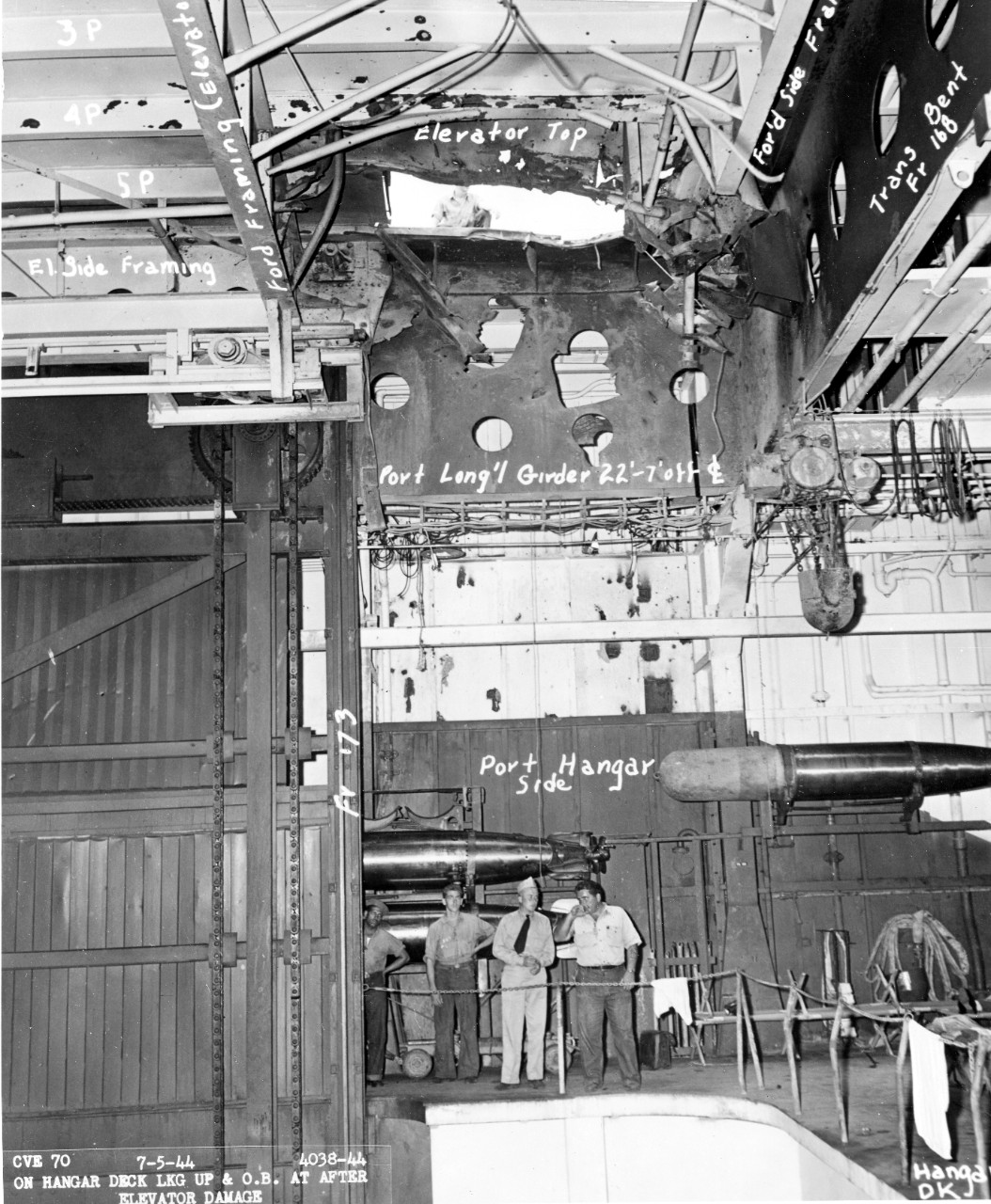
Eulogy
If war were to be scaled, every single soldier’s life would affect the balance; Lawrence James Waskiewicz was a man who gave up his life to shift the scale in the Allies’ favor during the Pacific Theatre. He was 19 years old when he enlisted in the U.S Naval Reserve and served as a Seaman First Class. He died due to extreme injuries resulting from a Japanese bomber on June 17, 1944. While his name may not be recognized, his valor and bravery will not go unnoticed by the vault of time.
He was the child of an immigrant, the eldest of three sons. Yet, he enlisted in the U.S. Navy Reserves to fight for our nation. As a seaman, he was in the apprentice phase of his training, cultivating core skills and immersing himself in military life and culture. While his specific jobs aboard the ship are unknown, that does not invalidate the time and effort he put forth into his service.
Franklin D. Roosevelt, one day after the Japanese attack on Pearl Harbor, said that it was “a date that will live in infamy.” He was correct; to this day, we remember and honor the fallen soldiers who lost their lives to protect our country. We stand here today, blue skies above us on a tranquil summer’s day, because of them, because of him. Lawrence Waskiewicz gave us something irreplaceable; he gave his years of blue skies away so that future generations could live with hope. His life was given in the name of freedom, in the name of America, and in the name of those who had fallen before him.
Thank you for your service, Lawrence Waskiewicz. You will not be forgotten.
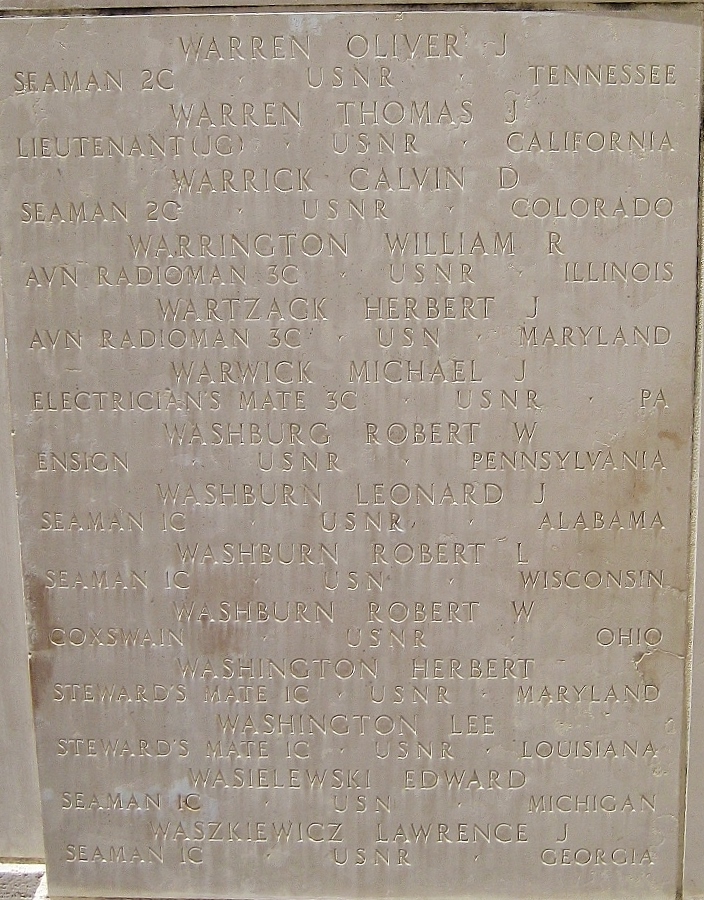
Reflection
few things in life leave an impression as profound as the Sacrifice for Freedom®: World War II in the Pacific program has left on me. My entire perspective of war and the weight of sacrifice has been altered completely through this experience. It all started when I met a young man, not in person, but through online historical databases and census records. This man was a brother, a son, and my Silent Hero: Lawrence James Waszkiewicz. I chose him as my Silent Hero, not by chance, but because he too was the child of an immigrant looking to help his nation. His last name stood out, atypical for a Georgia soldier at the time, and enticed me to learn more about his story. I learned the importance of preserving historical artifacts and records throughout this process because such things are crucial to keeping these stories and people alive.
I was not entirely sure what I was expecting to gain from this experience at the beginning of the trip but the experience superseded anything I could have ever imagined. It is one thing to view these historical sites from the safety of a computer screen detached from the world around you to actually stepping foot on the very ground men gave their lives to protect. My time spent on the USS ArizonaMemorial, in particular, is a memory that will stick with me for the rest of my life. As I said earlier, it is easy to detach yourself from reality when you’re staring at a screen, but looking at the names of the sailors who died on that ship right in front of me, I could not stop the tears that came out of me. I grieved the men who never had a chance to complete school, the men who never got to tell their families goodbye, and the wall of other silent heroes whose stories remain untold. Through this, I understood the weight of their sacrifice and the importance of remembering their stories.
On the last day of the trip, I was able to deliver my eulogy, his story, at the National Memorial Cemetery of the Pacific in Honolulu. After having visited the historical sites prior to delivering my eulogy I better understood the importance of this event and the responsibility that my peers and I had to ensure these Silent Heroes are never forgotten. By speaking out about their lives, family, and hometowns, I felt that Seaman First Class Waszkiewicz and my peers’ Silent Heroes stood among us that day. They were not nameless faces on the side of a memorial or a statistic in a history book; they were people who had families, likes and dislikes, and aspirations. I promised myself that day that this would not be the last time I told Lawrence’s story and that I would carry a piece of him with me for the rest of my life. We can only forget what we choose not to remember and by remembering his sacrifice I choose to give voice to this Silent Hero.
Bibliography
Primary Sources
Alabama. Talladega County. 1930 U. S. Census. Digital Images. ancestry.com.
Fanshaw Bay at Pearl Harbor Navy Yard. Photograph. July 5, 1944. National Archives and Records Administration (BS-110053). www.history.navy.mil/research/histories/ship-histories/danfs/f/fanshaw-bay.html.
Lawrence J. Waskiewicz, Official Military Personnel File, Department of the Navy.
Lawrence J. Waszkiewicz. World War II Draft Cards Young Men, 1940-1947. Digital Images. ancestry.com.
Georgia. Chatham County. 1940 U.S. Census. Digital Image. ancestry.com.
John Waszkiewicz. World War II Army Enlistment Records, 1938-1946. Digital Images. ancestry.com.
John Waszkiewicz. World War II Draft Cards Young Men, 1940-1947. Digital Images. ancestry.com.
Konstanty Waszkiewicz Petition for Naturalization. Georgia, U.S. Naturalization Records, 1893-1991. Digital Images. ancestry.com.
Medical Department – Hospitals – Miscellaneous – Fort Screven, Georgia. Photograph. November 14, 1918. National Archives and Records Administration (45495172). catalog.archives.gov/id/45495172.
Oscar Michael Waszkiewicz. World War II Draft Cards Young Men, 1940-1947. Digital Images. ancestry.com.
Training Camps and Schools – Military – Fort Screven, Georgia. Photograph. November 14, 1918. National Archives and Records Administration (45554542). catalog.archives.gov/id/45554542.
USS Fanshaw Bay, War Diary 4/1/44 to 8/31/44. Digital Images. fold3.com.
USS Republic arriving at Pearl Harbor. Photograph. August 15, 1942. Naval History and Heritage Command (NH 84008). www.ibiblio.org/hyperwar/OnlineLibrary/photos/images/h84000/h84008.jpg.
Secondary Sources
Evans, Mark L. “Fanshaw Bay 1943-1955.” Naval History and Heritage Command. Modified October 23, 2019. Accessed January 22, 2021. www.history.navy.mil/content/history/nhhc/research/histories/ship-histories/danfs/f/fanshaw-bay.html.
“Fort Screven.” Georgia Historical Society. Updated June 16, 2014. Accessed January 22, 2021. georgiahistory.com/ghmi_marker_updated/fort-screven/.
“H-032-1: Operation Forager and the Battle of the Philippine Sea.” Updated June 26, 2019. Accessed January 22, 2021. www.history.navy.mil/about-us/leadership/director/directors-corner/h-grams/h-gram-032/h-032-1.html.
Hattendorf, John B. and John Kennendy. “Naval History has long been intertwined with Newport’s.” NewportRI.com. Updated May 30, 2014. Accessed January 22, 2021. www.newportri.com/article/20140530/news/305309871.
“John Waszkiewicz.” Find A Grave. Updated March 30, 2010. Accessed January 22, 2021. www.findagrave.com/memorial/50469180/john-waszkiewicz.
“John Waszkiewicz.” National Cemetery Administration Grave Locator. gravelocator.cem.va.gov/index.html.
Kennedy, John W. “The Naval Training Station at Newport: A Place in U.S. Naval History.” Small State, Big History. Accessed January 21, 2021. smallstatebighistory.com/naval-training-station-newport-place-u-s-naval-history/.
“Konstanty Waszkiewicz.” Find A Grave. Updated February 4, 2020. Accessed January 22, 2021.www.findagrave.com/memorial/206814880/konstanty-waszkiewicz.
“Lawrence J. Waszkiewicz.” American Battle Monuments Commission. Accessed January 22, 2021. www.abmc.gov/decedent-search/waszkiewicz%3Dlawrence.
“Oscar Waszkiewicz.” National Cemetery Administration Grave Locator. gravelocator.cem.va.gov/index.html.
Oscar Waszkiewicz. Beneficiary Identification Records Locator Subsystem (BIRLS) Death File. ancestry.com.
“S1 Lawrence Waszkiewicz.” Find A Grave. Updated August 6, 2010. Accessed January 22, 2021.www.findagrave.com/memorial/56134822/lawrence-j-waszkiewicz.
USS Republic (AP-33), 1941-1945. University of North Carolina’s Ibiblo. Updated December 16, 2007. Accessed January 22, 2021.www.ibiblio.org/hyperwar/OnlineLibrary/photos/sh-usn/usnsh-r/ap33.htm.
“Susan “Susie” Scott Waszkiewicz.” Find A Grave. Updated February 4, 2020. Accessed January 22, 2021.www.findagrave.com/memorial/206814662/susan-waszkiewicz.
“Tybee Island.” National Park Service. Updated April 14, 2015. Accessed December 9, 2020. www.nps.gov/fopu/learn/historyculture/tybee-island.htm.

